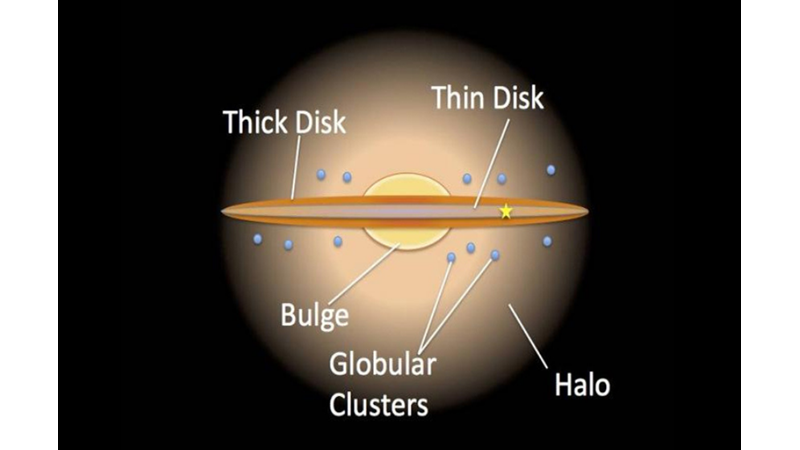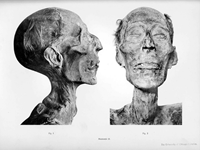On Earth, continents are probably necessary to support life. The continents 'float' on Earth's viscous mantle, and heat from the planet's core prevents the mantle from solidifying and locking the continents in place.
The core is hot due to the presence of radioactive elements from neutron star collisions. It should be possible to calculate when the first continents formed in the universe.
Jane Greaves is Professor of Astronomy in the School of Physics and Astronomy at Cardiff University in Wales. Her work focuses on planet formation and habitability.
Her new research is published in the Research Notes of the American Astronomical Society. Its title is a simple question: "When did the first exocontinents form?"
Greaves' work aims to make the search for habitable worlds more effective. If continents and the plate tectonics that enable them are critical for life, narrowing down the possible locations of rocky planets could make the search for habitable worlds more effective.
Firstly, why are continents and plate tectonics important?
Plate tectonics may not be completely essential for life. But they play an important role by moderating the Earth's temperature. They allow heat to escape from the core, and too much heat in the core inhibits Earth's protective magnetosphere.
They also help keep the Earth in the so-called Goldilocks Zone. But some research shows that plate tectonics were not very active billions of years ago when life first appeared. So they may not have been necessary for life to start, but they are probably necessary for life to continue and evolve into more complex creatures like humans.
The search for life and habitable planets should therefore be directed towards rocky planets with plate tectonics. What we really want to find are planets with continents. Planets with continents can support more biomass for longer than planets without, and plate tectonics creates continents.
Reaves has found a way to find out which planets might have continents by tracking which planets might have plate tectonics.
Much of the work relies on heat. If the core of a rocky planet generates enough heat, it probably has active plate tectonics, and we know why Earth's core generates heat.
The core contains the radioactive isotopes 238Uranium, 232Thorium and 40Potassium. Over geological timescales, these elements decay into other elements and generate heat.
These elements do not appear by chance. They are formed in neutron stars and supernova explosions.
There is an enormous amount of detail in all this, and no single study can bring it all together. Greaves' work is an attempt at a broader perspective to understand this.
"Here I present an exploratory method for hypothetical Earth-like planets of stars whose photospheric abundances allow some inference of planetary radiogenic warming," he writes.
The connection between stars and the planets that form around them plays a role. Planets form in the solar nebula, the same material from which a star is made. Therefore, the abundance of different chemical elements in a star is reflected in the planets that form around it.
Greaves took data from previous studies on the stellar abundances of different elements and then combined them with the ages of the stars in Gaia.
For accuracy, he looked at two separate populations of stars: thin-disc stars and thick-disc stars. Thin disc stars are typically younger and have higher metallicity, while thick disc stars are older and metal-poor.
His results show that the emergence of continents on Earth represents the median value.
Earth's plate tectonics began about 3 billion years ago, or about 9.5 billion years since the beginning of the Universe. In Greaves' sample, the first continents appeared in thin-disc stars 2 billion years before Earth. The thick-disc stars in his study produced rocky planets whose continents appeared even earlier: About 4 to 5 billion years earlier than Earth's.
He also found that on most planets continents would form more slowly than on Earth. Planets need the right amount of heat to form continents, and too much heat is unfavourable.
Greaves also found a correlation between continents and the Fe/H ratio in stars.
"There is a general trend towards the iron content of stars, with continents appearing earlier at lower [Fe/H] ratios," he writes.
Greaves writes that stars with lower metallicity than our Sun could be a good place to look for habitable exoplanets with continents.
"Systems with sub-solar metallicity seem particularly interesting," he writes.
In his sample, these planets all formed continents faster than Earth, so advanced life is more likely there. Maybe even more advanced than us.
Thick disc stars are also of interest because it is clear that they are rapidly evolving continents.
"Exemplary thick-disk systems are particularly advanced and deserve further investigation," he writes, adding that only 7 percent of all stars known to have exoplanets are thick-disk stars.
The upcoming Habitable Worlds Observatory is still years away from becoming operational, and there is time for the scientific community to determine the search criteria and what the best targets are.
"There are only 46 FGK stars in the top target list of the Habitable Worlds Observatory," he writes. But 15 of them appear in his results. If his work is correct, "...in this sample alone there could be two systems with more advanced biospheres than on Earth."
Greaves concludes that the outlook is good for finding habitable planets with long-lived continents.
"Given that nearby Sun-like stars have already produced several candidate hosts, the outlook for finding rocky exoplanets with continents looks very promising," he writes.
The next step is to investigate the stellar abundances of thorium and potassium isotopes that cause radiogenic heating. Doing so "...could help reveal more ancient systems where life on land may be older than on Earth."
Some elements are geophysically critical, especially those that produce radiogenic heat, such as U, Th and K. When you add Fe, this group of elements is critical to a planet's core size, gravity and internal temperature. A planet's internal temperature is critical not only because it governs the magnetosphere that supports life, but also because it helps create the conditions necessary for plate tectonics and continents.
Previous research shows a higher probability of Earth-like planets with continents early in galactic history, with a decline as the galaxy evolves. But we still have much to learn about exoplanets, habitability, radiogenic warming, continents and plate tectonics, and hundreds more.
Source: https://www.sciencealert.com/


 Nielawore
Nielawore










Yorum yazmak için lütfen giriş yapınız